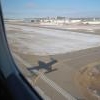231, no intercooler or wastegate?
-
Members Online
- amillet
- catchman86
- Ethan
- BillyT0020
- Justin Schmidt
- dkkim73
- AME LLC
- Rick Junkin
- dzeleski
- M20S Driver
- TCC
- MikeOH
- Andy95W
- YeloSub
- jamesyql
- Hoeschen
- 4cornerflyer
- Slick Nick
- 1967 427
- ericrynehess
- redbaron1982
- 201Steve
- blaine beaven
- jrwilson
- Ragsf15e
- katzhome
- affricate
- Marc_B
- CCAS
- philiplane
- exM20K
- takair
- toto
- Jetdriver
- ZamF16
- bhtitle


Recommended Posts
Join the conversation
You can post now and register later. If you have an account, sign in now to post with your account.